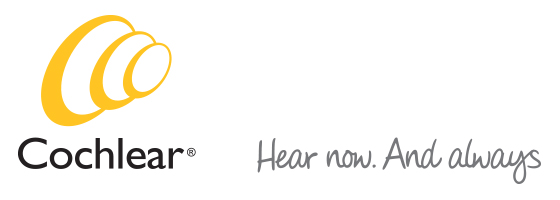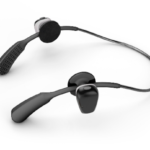For pediatric patients with mixed or conductive hearing loss (MHL/CHL) a bone conduction hearing solution may be the best treatment option. Through bone conduction, sound is delivered naturally through the bone directly to the cochlea, independent of the outer and middle ear.
The Cochlear™ Baha® System leverages this natural process by amplifying sound signals, converting them into vibrations and transmitting them to the cochlea. Many hearing care professionals agree that for MHL and CHL the Baha System is a more effective solution than air conduction devices.1 The Baha System offers a trio of powerful sound processors to meet individual needs. With access to Made for iPhone, Android compatibility and True Wireless™ accessories, patients are always connected to the sounds of life. The Baha System is unique in that it allows patients to demonstrate the benefits of the system prior to implantation. For pediatric patients under the age of five, non-surgical options are available until they are ready for implantation. The brand new SoundArc, and the similar Softband, are great options for children. The SoundArc and Softband give children the opportunity for early and consistent access to sound in order to promote speech and language development.
Candidacy and Evaluation
Candidacy evaluation for an implantable bone conduction system includes audiological testing as well as a personal trial with the Baha System. The patient’s air-bone gap can be a guide to the benefits that can be expected from choosing a Baha System. There may also be medical indications, which show that a bone conduction implant system will be the best solution. If possible, compare the results of the functional gain measurements in the sound field booth, with and without the sound processor.
Implantation can be achieved once the surgeon determines sufficient bone thickness and quality, which can vary among individuals. In the United States and Canada, labeling states that a bone-anchored implant can be placed at 5 years of age and older.
For infants or children who are not ready for implantation, Cochlear recommends the Baha Softband or the new Baha SoundArc. Both are nonsurgical options for children under age 5. This can be a good indication of the possible benefits the Baha System may provide for a child. It can also help make the decision easier to implant the child, once benefits have been observed.
It is critical to give pediatric patients early access to sound in order to promote speech and language development. Children who receive hearing rehabilitation before the age of six months perform significantly better in language tests at the age of 3 to 4 years than children who are treated later2. Studies conclude that delay in intervention may lead to permanent language deficit.2
Treatment and Fitting
When treating a pediatric Baha patient with MHL/CHL, it is important to choose the correct sound processor to ensure adequate power/gain. The benefit of a more powerful sound processor is most obvious at higher frequencies because these are weakened to a greater extent than low frequencies when passing through the skin.3 When using the SoundArc, Softband or Baha Attract System skin attenuation should be kept in mind.
Research suggests that pediatric patients with binaural MHL/CHL should be fitted with bilateral sound processors using the Baha Softband or SoundArc. 2, 4 Since early access to sound is crucial, it is best that a pediatric patient is fitted with Baha Sound Processors before the age of six months.2, 4
In conclusion, the Baha System offers a powerful portfolio of solutions for adults and pediatrics with MHL and CHL. The Baha portfolio includes different surgical and non-surgical options and a trio of powerful sound processors to meet individual needs.
If you are interested in bringing the Baha system into your clinical practice, please reach out to your Cochlear Field Team today. Don’t know who your Field Team members are? Call: 1-800-523-5798 or 303-790-9010 and we can connect you today!
If you are already a Baha provider, please right-click and save the infographic below to use during counseling.
* Play audiometry can be carried out with warble tones, speech or animal sounds.
References:
-
Snik AF, Mylannus EA, Proops DW, et al. Consensus statements on the BAHA system where do we stand at present? The Annals of Otology, Rhinology & Laryngology 2005; 195:1-12.
-
Yoshinaga-Itano C. Early Intervention after universal neo-natal hearing screening: impact on outcomes. Dev Disabil Res Rev. 2003;9(4):252-66.
-
Håkansson B, Tjellström A., Rosenhall U. Hearing thresholds with direct bone conduction versus conventional bone conduction. Scand Audiol. 1984; 13(1):3-13.
-
Dun CA, de Wolf MJ, Mylanus EA, Snik AF, Hol MK, Cremers CW. Bilateral bone-anchored hearing aid application in children: The Nijmegen experience from 1996 to 2008. Otol Neurotol. 2010; 31(4):615-23.
-
Mylanus EAM, van der Pouw KCTM, Snik AFM, Cremers CWRJ. Intraindividual Comparison of the Bone-Anchored Hearing Aid and Air-Conduction Hearing Aids. Arch Otolaryngol Head Neck Surg. 1998; 124(3):271–276. doi:10.1001/archotol.124.3.268






